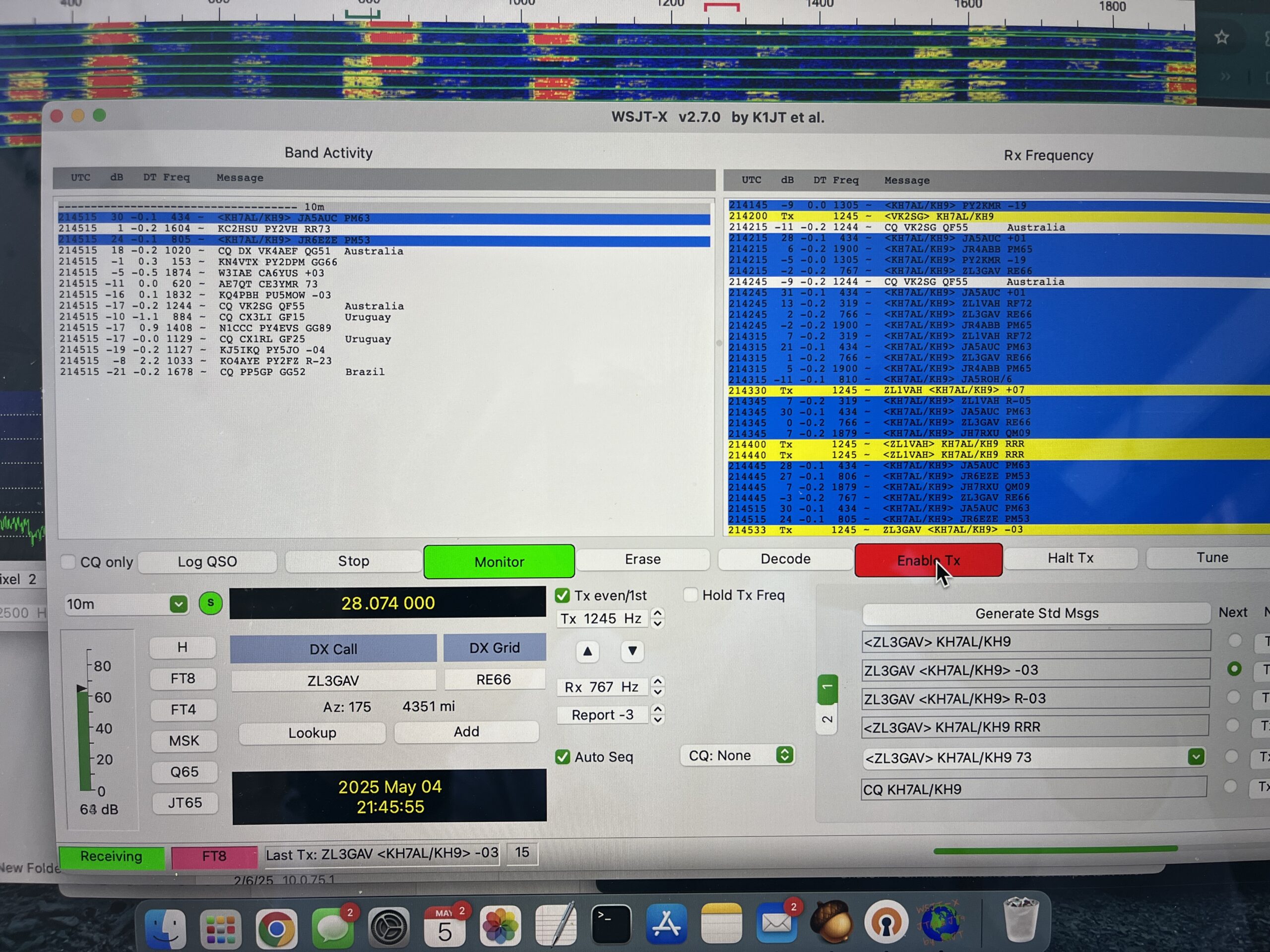9 May 2025
Kenny Rogers’ lyrics were bouncing around in my head after last night’s rough attempt at ham radio:
“You got to know when to hold ’em, know when to fold ’em,
Know when to walk away, know when to run…”
Feel free to hum along while I recount what led to a rather poor performance on my part.
Speaking of knowing when to running—that was the mood I was in. My mind wanted a break that running usually provides. This past week at work had been taxing. Lots to get done, some progress made, but overall, things just hadn’t flowed smoothly. Maybe my radio mojo was off, but even the lead-up to my scheduled time on 30m CW felt like a chore. Strike one.
Then I forgot the UHF-to-BNC connector I needed for my 30m dipole. Strike two.
And just as I was mentally rallying, I realized I didn’t have a stereo plug adapter for my CW key—an essential for the IC-7300. Strike three.
Instead of throwing in the towel, I attempted to persevere.
With my recent FT8 tests still fresh in mind, I called an audible. I switched to the DeltaFlex antenna, which was already set up. The best SWR I could get on 30m without adjusting wires was 3.0:1. The 7300 could tune that, but that’s not my preferred way to operate. So I pivoted to 20m, where I got a near-perfect match. Can I get another at-bat, or should I have folded and called it a night?
I’d read just enough and tinkered with WSJT-X enough to consider myself barely novice-level—just enough confidence (or ignorance) to dive into a real pile-up. One part of that rushed learning was configuring the software for fox-and-hound (f/h) mode.
First hiccup: after connecting the USB cable, I couldn’t get a successful test of CAT control to the radio. Strike one.
Then I set up f/h mode and picked a frequency above the usual 14.074 MHz FT8 watering hole. Thinking all was well, I posted a spot on the Parks On The Air (POTA) site and sent out a CQ. Immediately, three stations responded. In f/h, you can queue callers and work through them systematically. That’s how it’s supposed to work. But I couldn’t get the system to transmit properly—strike two.
Patience waning, frustration growing, I bailed on f/h and dropped back to the standard 14.074 FT8 frequency. First CQ… then came the deluge. I was swamped with replies and unsure who to choose—trying to be fair, trying to remember whose call sign I’d already seen, and trying not to drown in the digital noise. I could feel the last of my motivation being vacuumed away. Strike three.
FT8 has this weird time warp effect. Each 15-second volley feels short, but they pile up. About an hour slipped by before I finally raised the white flag. Thirty-eight QSOs logged—not bad, but it felt like failure.
I could sit in this frustration and claim I’m not a digital mode fan. But there’s a part of me that refuses to quit until I’ve at least figured it out. So for the record: I’ll be back on FT8 after more testing. That said, after several attempts—including this one—I’ve come to realize digital just doesn’t bring me the same joy as SSB or CW. If it’s your thing, I’m genuinely happy for you. But for me? Not so much.
So, if you hear FT8 from Wake Island—grab it while you can.
73, Allen


Leave a Reply